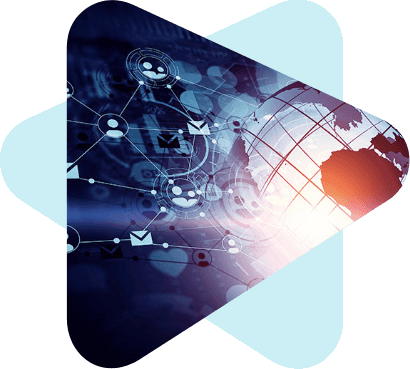When business stakeholders come to you looking for answers, having visibility and context around ERP data access and usage gives you the actionable insight necessary to provide value.
As a leader of Enterprise Applications, customizing legacy ERP applications like PeopleSoft, SAP ECC, Oracle EBS, etc., to meet your business’ exact process specifications can leave you between a rock and a hard place. The more customized your ERP applications get, the more your business stakeholders love it, but the complexity around application support and maintenance also increases. That being said, accepting more complexity is just part of the job, because after all, your most important role (in the eyes of others) is providing timely and accurate resolution to inquiries or incidents from your business stakeholders.

You know the drill: members from various business units come to you requesting help for a particular incident or an anomaly they spotted. It’s up to your team to provide a resolution in a timely manner. And that’s where the trouble begins. Many incidents require hours, weeks, and even months to research and resolve. It’s hard to provide excellent customer service to the lines of business when your team is facing major obstacles to resolving incidents in a timely manner.
What if I told you there’s a way to enable your team to spend less time researching an issue (or no time at all) and produce faster results while providing better value for the various business leaders and their teams?
Three Major Obstacles to Timely ERP Incident Resolution
You’re the last person who wants to hear or say, “well, that’s just [insert ERP app name here].” But that’s one way you can sum up the limitations and obstacles your team will immediately encounter.
Here’s a simplified view of that process from the perspective of PeopleSoft. Somebody from a line of business will contact a member of your Sys Admin team and say, “Hey, this user’s account was updated (i.e., maybe they didn’t get their paycheck), or there was some sort of anomaly in the execution of a typical business transaction (i.e., vendor didn’t get paid, etc.). We don’t know what it is, and the functional user(s) say it wasn’t them. We’re not sure what happened. Can you guys look into this? That would be great.”
This incident kicks off your process flow to find a resolution. Then come the obstacles:
Obstacle 1: Legacy ERP Logs Can’t Tell You About Data Access
Experience says that most people who use an ERP application like PeopleSoft don’t know who’s doing what (specifically), who’s accessing what information, or most importantly – why. You probably first need to work out if this is something that the user did themselves or a hacker was able to gain access to the system – and also work out if this is an inside job or an external attack.
And while the logs can point you in the right direction, the legacy ERP logs are not designed to provide detailed information on who accessed what or even, in most cases, viewed something sensitive. This leads to major obstacle number two…
Obstacle 2: ERP Logs are Disparate and Not Correlated
ERP logs were designed for troubleshooting, not granular activity logging, which contributes to organizations and business units not knowing what their employees are doing inside the applications. When it’s time to go under the application hood and examine the native logs, another metaphor comes to mind: looking for a needle in the haystack. Here’s an example of all the native logs you might find in your instance of PeopleSoft:
- App Server
- PIA (Web Server)
- Database
- Process Scheduler
- Load Balancer
- Identity Provider (SAML, LDAP, ADFS)
- Host O/S Logs
- Firewall
Your organization likely has more than one of these servers where these logs reside. You might have four application servers, eight web servers, and so on. Now you’re looking at finding a needle in multiple haystacks. And that data is not correlated, so there is little relative context that can enable your investigation.
Here’s a nerdy example using the App Server and Web Server logs. On the Web Server, you cannot identify the person who logged in because you don’t know the OPRID. All you have are an IP address and a timestamp. You need to go to the App Server and review the OPRID, timestamp, and IP address on login or log out and attempt to correlate that information with similar information on the Web Server.
Obstacle 3: Log Data is Not Enriched with Any Context That Makes It Actionable
Once your team has collected data from the logs and assembled material from other sources, the final step is to interpret everything and make a best guess so an action item can be established. How actionable is having a collection of raw data such as IP addresses, user IDs, location of devices, completed transaction, etc., if you’re not able to place that data into a human context?
Let’s take the example of “Jim” and the incident involving him not receiving a paycheck. The raw ERP data shows that Jim’s credentials accessed pages containing personal information and bank account information several times over a period of time. Jim, the human, denies that he made any changes to the data on those pages, so the paycheck should have been routed to his usual bank account. Maybe you change Jim’s username and password and cut him another check. Was Jim trying to defraud the company and get an extra check, or was Jim’s account compromised in some way? Could a hacker have accessed Jim’s payroll data, changed the account number, received the funds, then changed the number back – getting away without a trace? Absolutely! It happens every day. If you cut Jim a new check, you fix Jim’s immediate problem, but do you understand what’s happening in your system?
Why Appsian360 Immediately Makes You a Hero to Your Organization
You’ve been waiting in suspense to know when IT becomes the hero – well, here it is. When the business comes to you looking for answers related to a specific incident, Appsian360 provides the quick, actionable insight necessary to provide the company with the understanding of what happened with their ERP data.
How? Appsian360 logs granular user access to data, correlates existing ERP logs, enriches the data with contextual attributes (who, when, where, what device, etc.), and visualizes the ERP data’s access and usage on dashboards. Now your team can easily look at data access by IP addresses, user IDs, location of devices, pages accessed, etc., and very quickly understand the facts behind an incident.
Let’s go back to Jim’s situation. With just a handful of clicks in Appsian360, you confirm that “Jim’s credentials” did indeed access and edit his personal information. Additionally, you discover that “Jim” was logging in after-hours using a foreign IP address based in another country. With a few more clicks, it’s clear that the IP address is responsible for other compromised user accounts. You didn’t just discover Jim’s breach, you now have a clear picture and a direction to fix the actual security issue – one that was growing in urgency by the day!
Without context, you lack insight. Context around data access and usage creates actionable insights. Actionable insights support the company and provide value to key stakeholders.
Understanding user activity and data usage are precisely what the business needs – and without Appsian360, ERP logs lack insight. You can buck that trend with Appsian360.
Contact us to learn how Appsian360 can provide you with the most powerful, real-time view into ERP data access & usage








